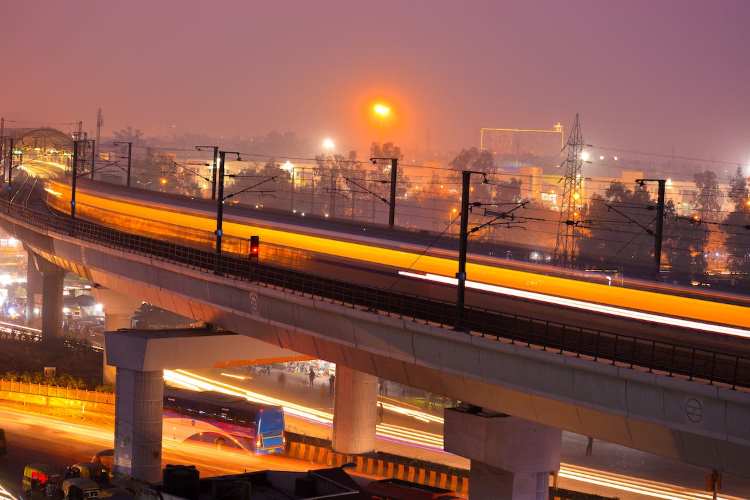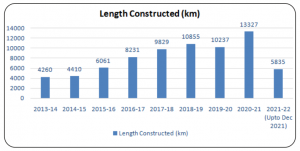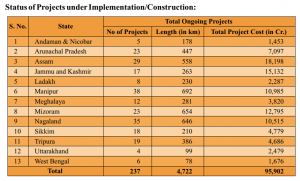
Budget 2023 on road safety: The transport sector and economic development are intrinsically linked with each other. A robust transport sector can contribute immensely to the growth of Indian economy, but the increasing number of road fatalities are undermining its potential. An efficient, dependable, affordable and safe transport sector is important for India which is a country of continental proportions.
The highly transactional and service-oriented nature of the transport sector highlights the complex relationship between its physical and human capital needs. Efficient transportation requires state-of-the-art infrastructure, effective maintenance, planning, and applications that are fully oriented towards users’ safety. The share of the transport sector in India’s GDP is 6.4%, two thirds of which is accounted for by road transport (3.6% of the GDP). If the transport sector can ensure the safety of its users, it can play an important role in making India a $5 trillion economy.
READ I Uttarakhand government must rethink tourism development
Budgetary provisions for 2023-2024
A close look at the Union budget proposals for the transportation sector will reveal several innovative and forward-looking proposals. The following are the seven key initiatives for the sector: enhancing opportunities for private investment in transportation infrastructure and harmonising its master list, modernising railways and strengthening transportation logistics, providing more regional connectivity, fostering transit oriented development, advancing 5G enabled services in the sector, promoting green and efficient energy, Green Hydrogen Mission, energy transition and energy storage project, and encouraging green mobility & replacement of old vehicles.
The newly established infrastructure finance secretariat will assist stakeholders to bring in more private investment in transportation infrastructure which includes railways and roads. A capital outlay of Rs 2.40 lakh crore has been provided for strengthening and modernising the Indian Railways. One hundred critical transport infrastructure projects for last and first mile connectivity of allied sectors have been identified for massive investments.


Fifty new airports, heliports, water aerodromes and advance landing grounds will be revived for improving regional air connectivity. Transit oriented development will be promoted for regional, city, and suburban renewal planning will be done for creating compact, walkable, pedestrian-oriented, mixed-use, and sustainable roads that will reduce the need for driving. The budget proposes advancement in the 5G services for better transport, traffic and road safety management. One hundred labs for developing applications will be set up in engineering institutions to create intelligent transport systems.
The National Green Hydrogen Mission with an outlay of Rs 19,700 crore will facilitate transition of the economy to low carbon intensity, and reduce fossil fuel imports. This budget provides Rs 35,000 crore for priority capital investments towards energy transition and net zero objectives for sustainable development and battery energy storage systems.
To promote green mobility, it is proposed to exempt excise duty on GST-paid compressed bio gas and customs duty exemption for the import of capital goods and machinery required to manufacture of lithium-ion cells for batteries used in electric vehicles. In furtherance of the vehicle scrapping policy, adequate funds have been earmarked for the purpose by all governments.
The government has removed customs duty of 252% levied on cars imported for testing in India. “With this move, India has become the sixth country to successfully provide testing and certification to foreign cars brought in the country. The duty concessions will make India competitive against the UK, Germany, China, Taiwan and Japan.
All these budgetary provisions will be effective from April 1, 2023. The purpose of these provisions will be defeated if citizens continue to lose life and limbs in road accidents. Therefore, the sector needs to be driven, keeping in mind the safety of users.
READ I Gathering storms: US economy stares at a debt limit standoff in the Congress
Road safety to the fore
Road transport contributes a large share of India’s GDP (3.6%) and 60% of the transport sector. The total length of India’s roadways is about 56 lakh kilometers and it keeps increasing every year. The Union budget has allocated around 1% of the total GDP for making newer roads and transport infrastructure. In June 2022, NHAI created a world record by laying bituminous lanes of 75 kms in 105 hours and 33 minutes on the national highway between Amravati and Akola districts of Maharashtra.
But again, the question is whether these roads are safe for its users? The answer to this question lies in the road accident data for 2021 which reveal a large number of deaths and injuries from road accidents. As per the report, there were 4,12,432 road accidents in 2021 which claimed 1,53,972 lives and caused injuries to 3,84,448 persons. The number of accidents, injuries and fatalities increased by 12.6%, 10.39% and 16.9% the next year.
Of the total road accidents, 1,28,825 (31%) took place on national highways (including expressways), 96,382 (23%) on state highways and 1,87,225 (45%) on other roads. While 56,007 (36%) people died in accidents on national highways, there were 37,963 (25%) deaths on state highways and 60,002 (39%) on other roads. People between ages 18 and 45 years were worst affected by accidents, accounting for nearly 67% of deaths. Two-wheeler riders and passengers make a large share of accident victims with 32,877 riders and 13,716 passengers who were killed were not wearing a helmet. Besides, 8,438 drivers and 7,959 passengers of four wheelers who died were not wearing seatbelts.
The road accident data clearly shows that most of the fatalities happen on national highways and younger people are more affected. Two-wheeler users have high fatality rate, and pedestrians and cyclists are the most vulnerable groups. Among the key behavioural risk factors, speed is the most likely cause of road accidents, deaths and injuries.
Other risk factors include not wearing helmets and seat belts, drunken driving and not using child restraint system. The overall economic loss due to all these fatalities, injuries and accidents is around 3% of the GDP against the sector’s total contrition of around 6%. The road accident data from the National Crime Records Bureau and the World Health Organisation reveal much higher figures compared with the MoRTH data.
New policies need to be formed at the central and state levels for the key risk factors such as speeding policy, drunken driving policy and there has to be stricter enforcement of all the safety related provisions in the Motor Vehicle Amendment Act, 2019. The proposed national road safety board needs to be formed as early as possible. In the enforcement, vehicle safety and traffic management use of 5G applications, and use of Artificial Intelligence (AI) need to be promoted. Innovations, startups and electronic enforcement of traffic laws need to be encouraged.
The budgetary provision made in the recent budget for the maintenance of national highways is merely Rs 2,600 crore. This needs to be enhanced substantially. The budgetary allocation for the maintenance is just 1% of the capital expenditure proposed for highways. The parliamentary standing committee on transport had recently raised concern over inadequacy of allocated funds for maintenance and repair of NHs and recommended higher priority to maintenance than making new roads.
The civic action for road safety in convergence with educational institutions and media and urban local bodies, panchayats, and district officials can play an important role in achieving the ambitious targets to reduce fatalities, injuries and accidents by up to 50% by 2025.
(Madhu Sudan Sharma is Senior Program Officer at CUTS International, a global public policy research and advocacy group. Views are personal.)
